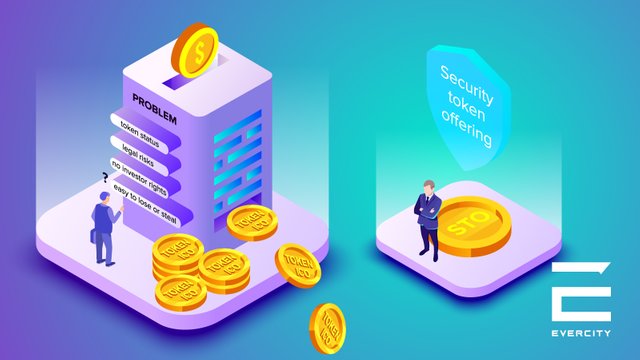STO vs ICO: investor rights & legal risks
Part 2 of the article STO: Revolution in fundraising
--
Wild West styled crypto anarchy did not last long.
The initial excitement over ICOs - multi-million investments, 10x returns, no regulations, no taxation and no responsibilities - has faded as rapidly as it has started, when in late 2017 regulators all over the world realized that the party has gone too far.
Several major Asian jurisdictions banned ICOs as a fundraising method, followed SEC's (The United States Securities and Exchange Commission) chairman Jay Clayton ultimate statement, which created a panic on crypto markets:
«Every ICO I've seen is a security».
The Commission later went less adamant on the matter, saying that bitcoin and ether are not securities, but some initial coin offerings may be.
There are multiple issues about ICOs and “utility” tokens that caused such an aggressive reaction from regulators in the first place. And the solution for these issues seems to be lying within the Security Token Offering concept.

ICO problem №1: token status
The status of tokens issued in the course of a fundraising campaign has been the stumbling block for the majority of ICOs. Most of projects consciously define their tokens as utilities – putting it simply, as an inner currency of a particular product or service, intended solely (de jure) for its operational needs.
De facto, startups have been exercising in creativity while inventing the reasons why they can't go on without their own token.
The majority of projects don't need their own token – they just need investments.
According to ICORating research only 3% of all tokens issued during ICO campaigns in 2018 are true utilities. Over 65% (!) function only as a payment form and can be easily replaced by fiat with no damage to the project’s economy.
Now let’s take a look at investors: they really seldom buy tokens during an ICO campaign in order to buy services of a particular (and yet inexistent) application in a year or two. They do so to gain profits. Which is, by the matter of fact, can be considered as an indication of a security.
Doesn’t matter if you called it a “utility” in your white paper - if it is a security, it has to comply with corresponding regulations. If you do not - get yourself ready for the legal consequences that might come.
STO solution: when doing an STO, founders do not have to invent a use case for their token within their platform/product/service in order to raise investments. Security tokens constitute financial instruments, backed by a particular asset (equity, debt, real estate, etc) and are fully compliant with all legal requirements.
ICO problem №2: investor rights
As implied by the unclear token status, utility tokens do not provide investors with any rights, except for the use within a particular platform. Projects avoid stating any revenue promises in white papers, as they are legally not authorized to do so.
It creates a tricky situation: investors want to gain profits, but they do not have any rights for any asset and revenue distribution.
Plus, there are no guarantees that your tokens won’t be stolen as a result of a hack or that you will not forget or lose your account details, that can not be restored.
No rights – no protection - unclear perspectives. Nobody promised anything, right?
STO solution: unlike utilities, security tokens provide investors with clearly defined (and fully legal) rights - a share in a company, revenue distribution, voting rights - these parameters may vary, but these rights will be guaranteed as the whole process is backed by the over-100-year-old regulative system.
Another important thing: only authorised investors are allowed to participate in a security token offering, having successfully passed KYC/AML and other checks.
ICO problem №3: high scam risk
According to some estimations, about 80% of all ICOs in history were scams.
In 2017 a lot of intentionally fraudulent projects took advantage of unregulated fundraising schemes and zero taxation.
BananaCoin project, for example, attracted much attention (and laughs) in the Russian crypto space, when a group of people raised a couple million $ to expand their banana plantations in Laos. Soon after the ICO campaign it turned out that neither plantations nor even a registered company exist. The criminal charges did not seem to stop the founders, and they reportedly switched to mango business. So watch out for fruits.
Another category consists of maybe benevolent but impractical daydreamers, who come out to the market with a single idea, not backed by any existent project - and sometimes even an MVP. At the same time, unqualified investors without any technical or other professional background find it extremely hard to distinguish high-quality projects.
This is enhanced by the lack of standardised reporting and audit in ICO environment, which complicates the monitoring of portfolio
STO solution: while STO does not fully solve this problem by itself, the implementation of blockchain technology provides a very useful solution: the DAO (decentralised autonomous organisation) principle. First described by Vitalik Buterin, this concept suggests that the funds raised during an ICO are stored on a blockchain, and every new tranche is unlocked when a project successfully fulfills the next step of its roadmap, as voted by the token holders. Security token accelerator Evercity is the example how these two concepts - STO and DAO - are brought together to ensure a more efficient, safe and transparent fundraising.
Coming next: STO vs VC